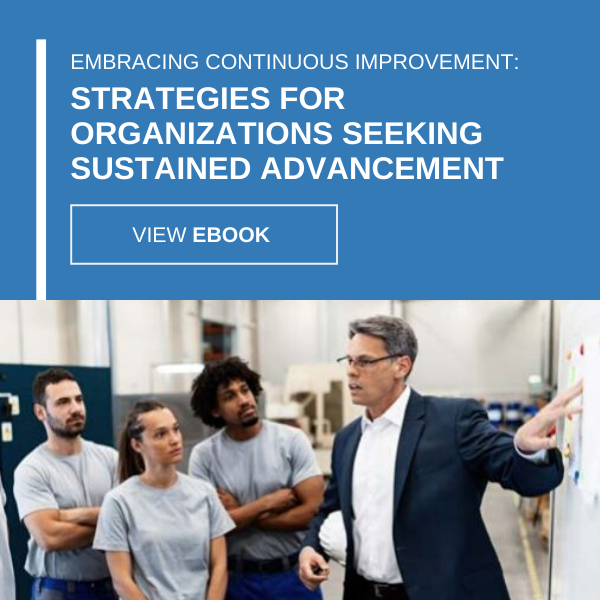-
Subscribe to Blog:
SEARCH THE BLOG
CATEGORIES
- Aerospace
- Asset Maintenance
- Automotive
- Blog
- Building Products
- Case Studies
- Chemical Processing
- Consulting
- Food & Beverage
- Forestry Products
- Hospitals & Healthcare
- Knowledge Transfer
- Lean Manufacturing
- Life Sciences
- Logistics
- Manufacturing
- Material Utilization
- Metals
- Mining
- News
- Office Politics
- Oil & Gas
- Plastics
- Private Equity
- Process Improvement
- Project Management
- Spend Management
- Supply Chain
- Uncategorized
- Utilities
- Whitepapers
BLOG ARCHIVES
- September 2025 (1)
- August 2025 (2)
- July 2025 (2)
- June 2025 (4)
- May 2025 (1)
- April 2025 (1)
- March 2025 (1)
- February 2025 (4)
- January 2025 (4)
- December 2024 (4)
- November 2024 (2)
- October 2024 (6)
- September 2024 (5)
- August 2024 (5)
- July 2024 (6)
- June 2024 (3)
- May 2024 (3)
- April 2024 (4)
- March 2024 (3)
- February 2024 (4)
- January 2024 (5)
- December 2023 (2)
- November 2023 (1)
- October 2023 (6)
- September 2023 (3)
- August 2023 (4)
- July 2023 (2)
- June 2023 (3)
- May 2023 (7)
- April 2023 (3)
- March 2023 (3)
- February 2023 (5)
- January 2023 (6)
- December 2022 (2)
- November 2022 (5)
- October 2022 (5)
- September 2022 (5)
- August 2022 (6)
- July 2022 (3)
- June 2022 (4)
- May 2022 (5)
- April 2022 (3)
- March 2022 (5)
- February 2022 (4)
- January 2022 (7)
- December 2021 (3)
- November 2021 (5)
- October 2021 (3)
- September 2021 (2)
- August 2021 (6)
- July 2021 (2)
- June 2021 (10)
- May 2021 (4)
- April 2021 (5)
- March 2021 (5)
- February 2021 (3)
- January 2021 (4)
- December 2020 (3)
- November 2020 (3)
- October 2020 (3)
- September 2020 (3)
- August 2020 (4)
- July 2020 (3)
- June 2020 (5)
- May 2020 (3)
- April 2020 (3)
- March 2020 (4)
- February 2020 (4)
- January 2020 (4)
- December 2019 (3)
- November 2019 (2)
- October 2019 (4)
- September 2019 (2)
- August 2019 (4)
- July 2019 (3)
- June 2019 (4)
- May 2019 (2)
- April 2019 (4)
- March 2019 (4)
- February 2019 (5)
- January 2019 (5)
- December 2018 (2)
- November 2018 (2)
- October 2018 (5)
- September 2018 (4)
- August 2018 (3)
- July 2018 (2)
- June 2018 (4)
- May 2018 (3)
- April 2018 (3)
- March 2018 (2)
- February 2018 (2)
- January 2018 (1)
- December 2017 (1)
- November 2017 (2)
- October 2017 (2)
- September 2017 (1)
- August 2017 (2)
- July 2017 (2)
- June 2017 (1)
- April 2017 (3)
- March 2017 (3)
- February 2017 (2)
- January 2017 (2)
- December 2016 (2)
- November 2016 (4)
- October 2016 (4)
- September 2016 (3)
- August 2016 (6)
- July 2016 (4)
- June 2016 (4)
- May 2016 (1)
- April 2016 (3)
- March 2016 (4)
- February 2016 (2)
- January 2016 (4)
- December 2015 (3)
- November 2015 (3)
- October 2015 (1)
- September 2015 (1)
- August 2015 (4)
- July 2015 (6)
- June 2015 (4)
- May 2015 (7)
- April 2015 (6)
- March 2015 (6)
- February 2015 (4)
- January 2015 (3)
CONNECT WITH US
Tag Archives: Marketplace Conditions
“It is just not the right time.” Business leaders bring out this all-too-common excuse when confronted with the notion of process improvement, often pairing the statement with promises of future operational advancement initiatives. Why? There are several common reasons. For instance, a good number of executives operate with the impression that frontline employees, including those in managerial positions, do not want change.
Back in 2016, leadership coach and New York Times bestselling author Mark Murphy surveyed approximately 2,100 business leaders and found that more than 37 percent believed that all employees preferred sticking to the status quo rather than pursuing change. Other executives are reticent to devote company resources to process improvement efforts whose results could vary, depending on implementation and long-term follow-through. These and other rationales give decision makers in the c-suite all the ideological ammunition they need to push off shop-floor optimization indefinitely.
In all, these business leaders are not detached from reality. Employees do fear change – Murphy discovered that 45 percent were more comfortable maintaining existing workflows – and haphazard spending can lead to significant budgetary damage. However, the risks that accompany operational stagnation are much greater than those associated with internal resistance and aggressive budgeting.
The modern marketplace dictates that organizations across all sectors seek out improvement wherever and whenever possible. Those that cling to the status quo typically find themselves suffering losses as a consequence of unyielding operational rigidity, losing ground to forward-thinking competitors, or grappling with mass customer attrition as past patrons seek out new product or service providers that can more effectively meet their increasingly intense expectations. Here are some of the reasons why now is always the right time for process improvement:
1. Changing marketplace conditions
The global marketplace never stops evolving due to the arrival and departure of overarching economic and technological developments. The emergence of protectionist trade policy, particularly in the U.S., is perhaps the most consequential event affecting the market. In April 2017, the Trump administration instituted sweeping tariffs on Canadian softwood lumber imports, per The New York Times. The Department of Commerce, at the behest of the White House, imposed tariffs of between 3 percent and 24 percent on the wood in retaliation over what the DoC deemed underhanded trade practices. Leaders within the commercial and residential construction and development sectors reacted with disappointment, claiming that the action would ultimately increase home prices and hurt consumers. This predicated outcome ultimately came to pass, as builders passed on their increased overhead expenses to buyers, The Times reported.
A similar scenario unfolded in May 2018, when the Trump administration called for increased duties on imported aluminum and steel, according to The Wall Street Journal. DoC officials imposed duties of 10 percent and 25 percent on aluminum and steel, respectively, a major move that sent shock waves across numerous industries – most notably, the automotive space. While domestic automakers normally source the metal used to make vehicle frames from American mills, these entities leverage large amounts of imported aluminum and steel to create ancillary components. As a consequence, the overhead costs associated with the production of these parts rose significantly following the implementation of the duties, increasing vehicle prices by hundreds and, in some cases, thousands of dollars.
Marketplace shifts of this nature are immensely disruptive to enterprises across countless industries and occur with regularity. However, businesses can mitigate the financial fallout and keep their footing by exploring and implementing process improvements that facilitate organizational scalability and ultimately allow them to make the best out of bad situations.
2. Increasing competitor capabilities
The emergence of sophisticated yet reasonably priced information technology services and solutions has leveled the operational playing field, lending small- and medium-sized companies the shop floor capabilities needed to carve out a considerable market share, even among larger, more established competitors. An estimated 43 percent of businesses worldwide have allocated more resources to digitization efforts in 2019, intent on putting into place the latest enterprise technologies, including artificial intelligence, business intelligence, and internet of things solutions, according to the Enterprise Mobility Exchange.
Of course, executives are not putting their faith in technology alone, as approximately 42 percent are supplementing new IT infrastructure with major process improvement efforts meant to bolster efficiency and boost revenue gain, per research from Red Hat. In short, organizations everywhere are pursuing operational advancement at scale, via multiple means.
Executives sitting on the outside looking in on this widespread push for improvement have no choice but to embrace progress and search for strategies that might make their respective companies more viable. Even those overseeing veritable industrial empires should take this approach, as marketplace fragmentation can bring down the biggest players.
3. Rising customer demands
Modern consumers are notoriously demanding, a phenomenon most analysts pin on both the emergence of advanced consumer technologies and the ecommerce revolution. Unfortunately for businesses, these buyers become more emboldened with each passing year, continually raising their expectations.
For instance, shoppers are no longer content with mobile application access or stock delivery services, researchers for JDA found. They expect retail companies to maintain robust on-the-go shopping experiences that feature seamless payment and data security components, while also offering accelerated shipping services in line with Amazon Prime. Businesses in the food and beverage industry are experiencing similar pressures, as buyers push them to adopt all-natural ingredients and provide food labeling with exhaustive ingredient lists. And, once these organizations meet such demands, consumers will undoubtedly come up with more.
Pursuing process improvement is perhaps the only way organizations can keep up with customer expectations, remain relevant, and ultimately find sustainable success.
All of these variables – marketplace change, competition, and customer demand – never stop evolving, which means the right time for process improvement could conceivably be “always.” Embarking on such programs is, of course, no easy task. In fact, most businesses need external assistance of some kind to get the job done. Here at USC Consulting Group, we have been helping companies optimize their operations for decades, leveraging proven techniques and tools that ease change and lay the foundation for growth and continuous improvement.
Contact us today to learn more about our work.







